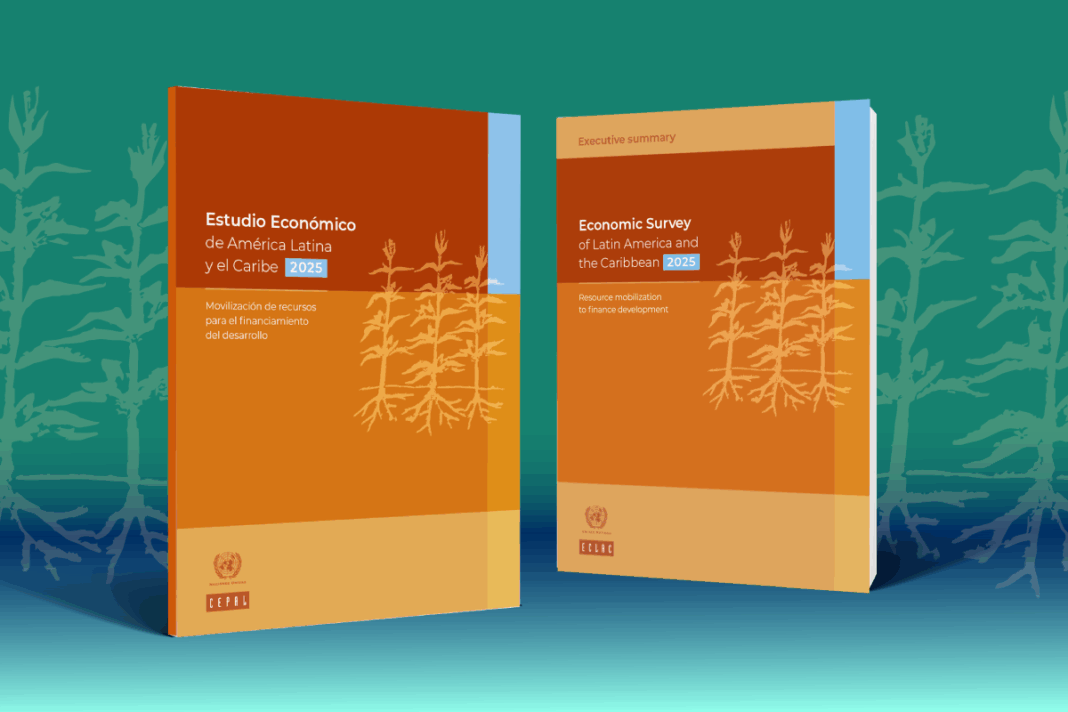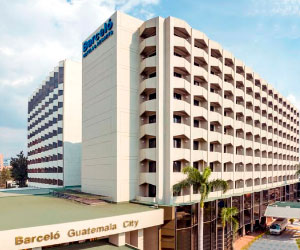The Economic Commission for Latin America and the Caribbean (ECLAC) presented today a new edition of its annual report Economic Survey of Latin America and the Caribbean 2025: resource mobilization to finance development, in which it warns that the region continues to endure a prolonged period of low growth. It is estimated that real Gross Domestic Product (GDP) will grow 2.2% on average in 2025 and 2.3% in 2026, in line with the rates recorded in 2023 and 2024 (see attached table).
The new projections for 2025 represent a slight upward revision from those published by the organization in April (2.0%), which is attributable to improved GDP performance in the first quarter of the year.
The report – released at a press conference led by the United Nations regional commission’s Executive Secretary, José Manuel Salazar-Xirinachs – emphasizes that the estimates point to different dynamics among subregions and countries. In South America, a 2.7% expansion is foreseen in 2025, above the regional average, based mainly on a recovery in Argentina and Ecuador, an upturn in growth in Colombia and Paraguay’s solid expansion. However, in the rest of the subregion’s countries, a slowdown versus 2024 levels is expected. In 2026, South America’s growth is seen easing again to settle at 2.4%.
In Central America and Mexico, projected growth for 2025 is 1.0%, nearly half the 1.8% expansion recorded in 2024, due to the weakening of external demand, especially from the United States. Countries such as Guatemala, Panama and the Dominican Republic will exhibit a more dynamic performance, however, with rates topping 3.5% thanks to the impetus of the services sector, private consumption and remittances. On the whole, a modest recovery to 1.7% growth is expected in 2026, although the subregion will continue to be highly vulnerable to external shocks due to its structural dependence on the U.S. economy in commercial, financial and migration-related matters.
In the Caribbean (excluding Guyana), growth is forecast at 1.8% in 2025 and 1.7% in 2026, marking a deceleration versus 2024, which is attributable to lower GDP growth in the United States, and the ensuing reduction in the demand for tourism services, in addition to lower global demand for services. The subregion continues to face high costs for energy imports and transportation, as well as notable exposure to natural disasters – factors that impact its external position and debt levels. In contrast, Guyana is seen maintaining high growth rates, thanks to continued investment in the hydrocarbons sector.
The macroeconomic scenario for 2025-2026 will be marked by less dynamism in domestic aggregate demand. The regional macroeconomic environment will be characterized by weak domestic demand, particularly due to slower private consumption. In addition, international prospects remain unfavorable, limiting the external impetus for regional growth.
In 2025 and 2026, global economic growth is seen easing as a result of multiple conditioning factors, including geoeconomic tensions and fragmentation, even more restrictive financial conditions, a weakening of international trade, and armed conflicts. This is compounded by intensified external vulnerability, reflected in the forecast for a larger current account deficit and in greater dependence on external capital. The report indicates that in the 2025-2026 period, the region’s balance of payments will continue to be subject to various risks, such as the worsening of geopolitical conflicts, the volatility of commodities prices and the synchronized deceleration of the world’s main economies.
Employment growth is also expected to slow. In line with economic activity dynamics, ECLAC anticipates that job growth will remain low in the region’s economies in 2025 and 2026. The increase in the number of employed people is expected to be lower than in previous years. In this scenario, the unemployment rate is seen stabilizing around 5.6%. And while a slight reduction in informality and in the labor gaps between men and women is expected, these indicators will remain at high levels. The 2025 and 2026 projections point to stable regional inflation, although the risks of upward inflationary pressure are expected to persist.
In sum, the report warns that the global and regional outlook for 2025 and 2026 is subject to great uncertainty. The growth dynamics of the region’s economies could deteriorate as a result of increased global risks.
Mobilizing resources to finance development
Given this complex outlook, ECLAC stresses the region’s urgent need to “mobilize greater resources to overcome the traps of low growth, high inequality, limited social mobility and ongoing structural development gaps. In the medium term, Latin America and the Caribbean will face the challenge of preserving its macroeconomic stability and advancing its productive transformation in an increasingly volatile international environment. Facing this challenge requires articulating a long-term strategic vision to underpin sustainable and inclusive development, with short-term macroeconomic policies that would allow for mitigating risks and reducing exposure to external shocks,” the organization’s Executive Secretary indicated in his presentation.
The Economic Survey 2025 addresses three key dimensions for boosting development-financing capacity in the region, based on three strategic pillars.
The first pillar is centered on domestic resource mobilization. The report identifies the fiscal and structural challenges that limit resource mobilization in the region. It proposes improving the quality of spending, increasing public investment, strengthening tax collection by reducing evasion and streamlining tax expenditures, while also moving towards greater progressivity in the tax system.
The second pillar addresses the mobilization of external and private resources. In this regard, the document poses the need to reform the international financial architecture in line with the Sevilla Commitment, to redefine the eligibility criteria for Official Development Assistance (ODA), and strengthen sovereign debt resolution mechanisms. In addition, it proposes scaling up private investment by developing capital markets at a national level, promoting the use of instruments such as thematic bonds, debt swaps and mixed financing.
The third pillar stresses the importance of enhancing the role of development banks in resource mobilization. The report underscores that development banks play a strategic role in channeling sources of financing to key sectors. To speed the pace of achieving the Sustainable Development Goals (SDGs) by 2030, development financing institutions need to propel large-scale projects using innovative mechanisms that would articulate public and private investment. The importance of collaboration between institutions that provide financing for development is emphasized, with a view to expanding their lending capacity and their reach.
The Sevilla Commitment
The recent Fourth International Conference on Financing for Development, held in Sevilla (Spain), reaffirmed the global commitment to sustainable development and to increased financing. In its new document, ECLAC urges the region’s countries to take advantage of this impetus to accelerate the mobilization of financial resources, strengthen economic stability and move towards more productive, inclusive, sustainable and resilient development. (https://www.cepal.org/en/pressreleases/latin-america-and-caribbean-endures-prolonged-period-low-growth-it-will-grow-22-2025)


































